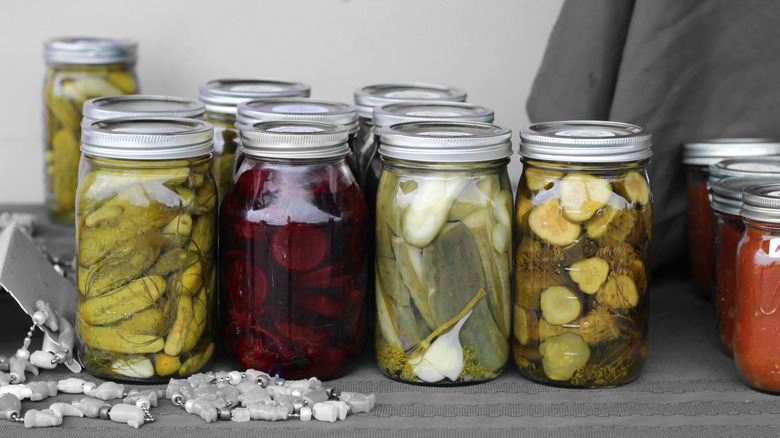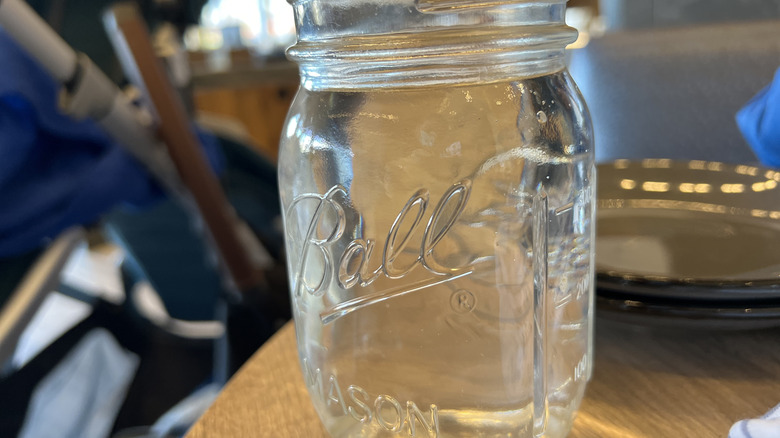What's The Difference Between Mason Jars Vs Canning Jars?
We may receive a commission on purchases made from links.
Home canning has made a huge comeback in the United States since 2020, probably because it's an easy way to preserve many homemade foods and save some money. If you're thinking about jarring up a pot of spaghetti sauce or a batch of pickles, however, always use canning jars, which are specifically designed for home canning. Oftentimes, these jars are referred to as Mason jars, but that is only a brand, which is named for the man who created the famous design.
Mason jars were invented and patented by John L. Mason in 1858, and featured a threaded neck and a two-part, screw-on lid with a rubber seal. When the patent expired in 1880, several other companies started making similar jars based on the same design, including Ball, Kerr, Atlas, and Globe. The name stuck, however, kind of like Ziplock and Tupperware, and many people to this day still interchangeably use the name Mason or "Mason-type" to describe a basic canning jar. Interestingly, it wasn't Mason himself who made his namesake canning jars into a household name. It was actually the Ball company, which licensed his design in the late 1800s, that would go on to mass produce the Ball Mason jar.
How to tell if a canning jar is a Mason jar
The good news is that you don't have to be a canning jar expert to figure out which jars are Mason. Every canning jar company has its name and logo embossed somewhere in the glass, typically right on the front. If the jars have smooth sides, which are great for freezing, the name is usually embossed on the bottom. You can still buy brand-new jars with both the Ball and Mason names on them, like this Ball Pint Mason Jar, Regular Mouth, although Newell Brands, which owns the Ball brand, also manufactures very similar jars with just the Ball name.
Since Mason jars have been ubiquitous in American culture for so long, it's probably no surprise that some antique versions are highly collectible. Some can even fetch hundreds of dollars if you're lucky enough to come across them in an estate sale or flea market. If you're looking for vessels for actual canning, however, steer clear of secondhand jars. Over time and multiple uses, the glass can weaken from the stress and eventually crack or break. The lids are also not designed for reuse for canning. Save the antiques and hand-me-downs for decorations or Mason jar salads, and start with a new batch of jars if you're planning to take up canning this year.

